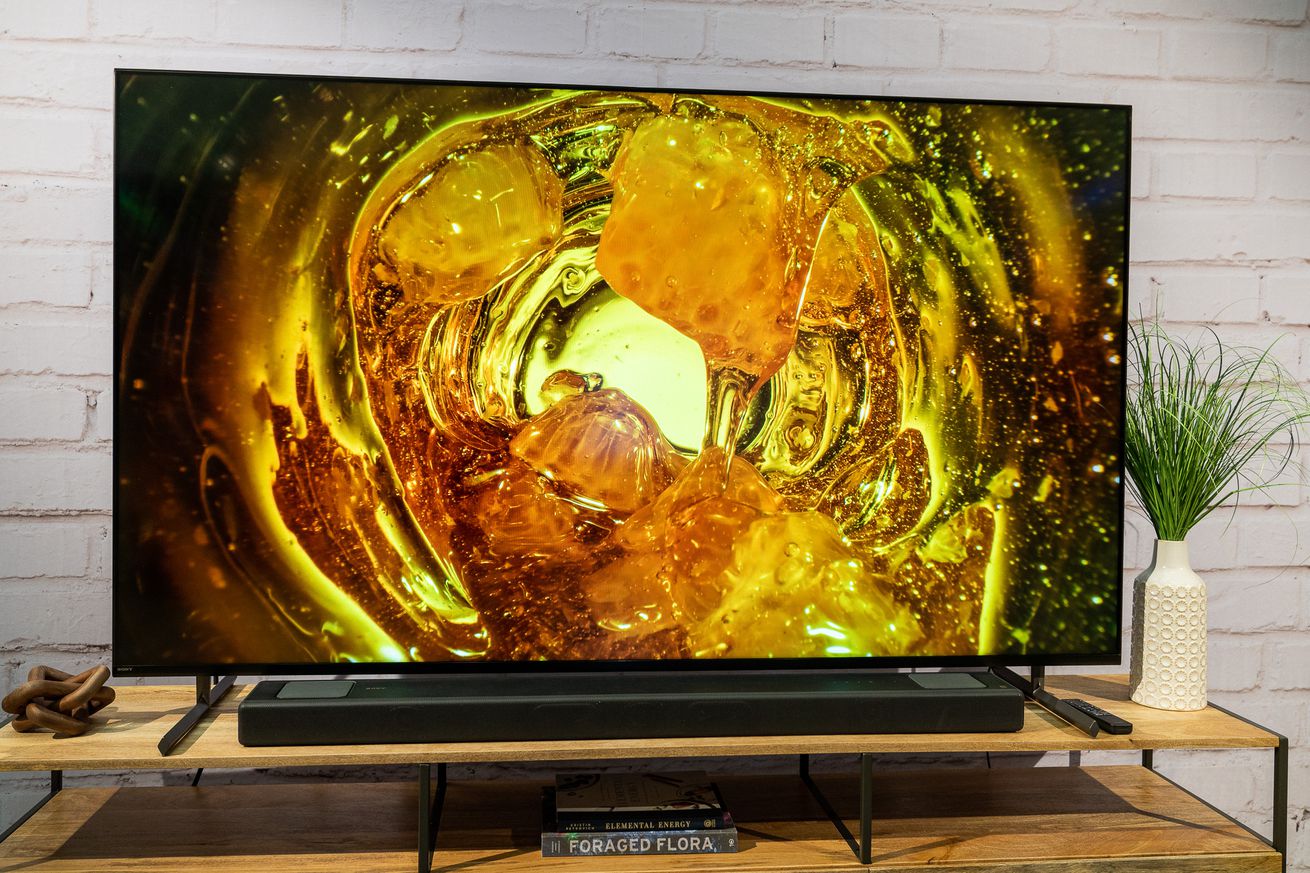
Sony announces 2023 TV lineup: better late than never
After making the unusual decision to wait until after CES to announce its latest TVs, Sony is finally introducing the 2023 lineup of Bravia XR sets. The new lineup includes a wickedly bright QD-OLED at the top of the pile, but this is otherwise mostly a year of iterative refinement and modest improvements. Several of the TV models have gained more dimming zones and slight brightness improvements compared to the sets from last year that they’ll be replacing.
As always, image processing is being positioned as a major draw for Sony’s TV portfolio. The company is as confident as ever that its Cognitive Processor XR is what makes Sony TVs stand out from the field in the way they handle challenging scenes. New this year is a feature called XR Clear Image, which adapts picture adjustments based on the quality of the source material. If it’s genuine 4K content from a streaming service or UHD Blu-ray disc, the TV won’t mess with the image much.
But Sony says its system is smart enough to detect 1080p video — even in cases where the TV is getting a 4K signal — and it will add extra refinement to the image processing while preserving elements like film grain and being respectful of creator intent. All of Sony’s 2023 TVs continue to run Google TV as their OS: the software has a content-forward interface and supports features from Apple (AirPlay 2 / HomeKit) and Amazon (Alexa) on top of the built-in Google services like Assistant voice search.
All of these TVs are capable of 4K gaming at 120Hz, though they’re still limited to two HDMI 2.1 ports; the other two remain stuck at HDMI 2.0. Sony continues to offer deep integration with the PS5, but there are new gaming software features that also extend to Xbox that I’ll cover later.
2023 Bravia XR models
Let’s start with the entry-level model and work our way up. The X90L is a full-array local dimming LED set designed to offer compelling performance for its price. This year, Sony has switched from a plastic bezel to an aluminum finish. Depending on which size you choose, the X90L will include up to 60 percent more local dimming zones and 30 percent higher peak brightness compared to its predecessor. The 98-inch X90L offers the biggest maximum screen size of anything in Sony’s new line.
Moving up from there, we get the A80L OLED, which now comes in an 83-inch size on top of the display sizes offered with last year’s cheaper Sony OLED. The upgrades here are minor: the company says you can expect 10 percent brighter performance and slightly better dialogue clarity due to improved tweeters. But overall, it’s very similar to last year’s A80K WRGB OLED TV. You can consider this new model a rival to LG’s C2 (and now the C3).
It’s the QD-OLED A95L that could wind up as Sony’s most impressive TV this year. The A95K was widely considered to be the top 4K OLED of 2022, so the pressure’s on.
Like the Samsung S95C it will compete against, the A95L comes in 77-inch, 65-inch, and 55-inch sizes. That means it’s certainly using the same second-generation Samsung Display QD-OLED panel that promises up to 200 percent better peak brightness when compared to the previous A95K. And the big benefit of QD-OLED is that the brightness ramp also applies to color luminosity. This is the year that high-end OLEDs will finally be right at home in bright rooms.
But Sony is still making premium Mini LED sets as well. Despite having a lower number in the name, the new X93L Mini LED TV replaces 2022’s X95K model. Sony describes it as very similar in overall performance. It’ll come in 85-, 77-, and 65-inch sizes. And now, the company is adding a second Mini LED set above it with approximately 20 percent more local dimming zones to reduce any perceptible blooming. But that model, the X95L, will only be made available in an 85-inch version.
Now, I’ll cover a couple of new software additions.
Eco Dashboard
Everyone wants to help the Earth, right? Right? Now, we’re getting Sony’s approach. The Eco Dashboard is a central hub (accessible from the homescreen) that encourages customers to be eco-conscious and mindful of settings that draw more power. As you enable eco-friendly options, the tree grows. If you turn them off, the tree sheds that green and will appear bare. All of these settings are still found in the usual menus, but Sony wanted to put them together in one place.
Sony joins the game menu train
Just like Samsung, LG, Hisense, and others, Sony will now display a settings menu tailored to gaming instead of making you dig through the normal screens. Sony’s implementation lets you toggle VRR, motion blur reduction, black equalizer / contrast adjustments, and a persistent on-screen crosshair. There will also be an option to adjust the screen size of your game if you want a smaller window on a large-size TV for whatever reason.
Unfortunately, Sony’s game menu doesn’t display the current live frame rate; that’s a data point that some people like having access to so they can easily monitor performance, but with this, you just get the current resolution and max frame rate.
Sony isn’t sharing pricing for any of the new Bravia XR TVs just yet. But with competitors already shipping out their 2023 lines, I’d expect those details to arrive sooner than later.
Photography by Chris Welch / The Verge

